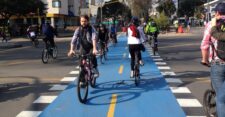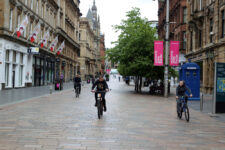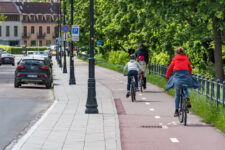Mastering the Cycling City
Mastering the Cycling City is a self-guided course for city planners, practitioners, and advocates that provides context, guidance, and case studies to improve urban cycling. The course is made up of 5 modules, which you are welcome to move through in any order. To reinforce what you’ve learned, activities, templates, and resource links can be found at the end of each module.
About this course:
This self-paced virtual course has 3 modules that will take about 45 minutes each, for a total of 2.5 hours of material. We designed it so that you would spend less than one hour a week for three weeks to finish the course. You are also welcome to binge-watch, too. At the end of the course, if you wish to receive a certificate of completion and be invited to future live workshops, you can request to take a brief quiz.
NOTE: Each Module in this course is followed by a quiz, which can be found at the bottom of the Module’s final lesson.





